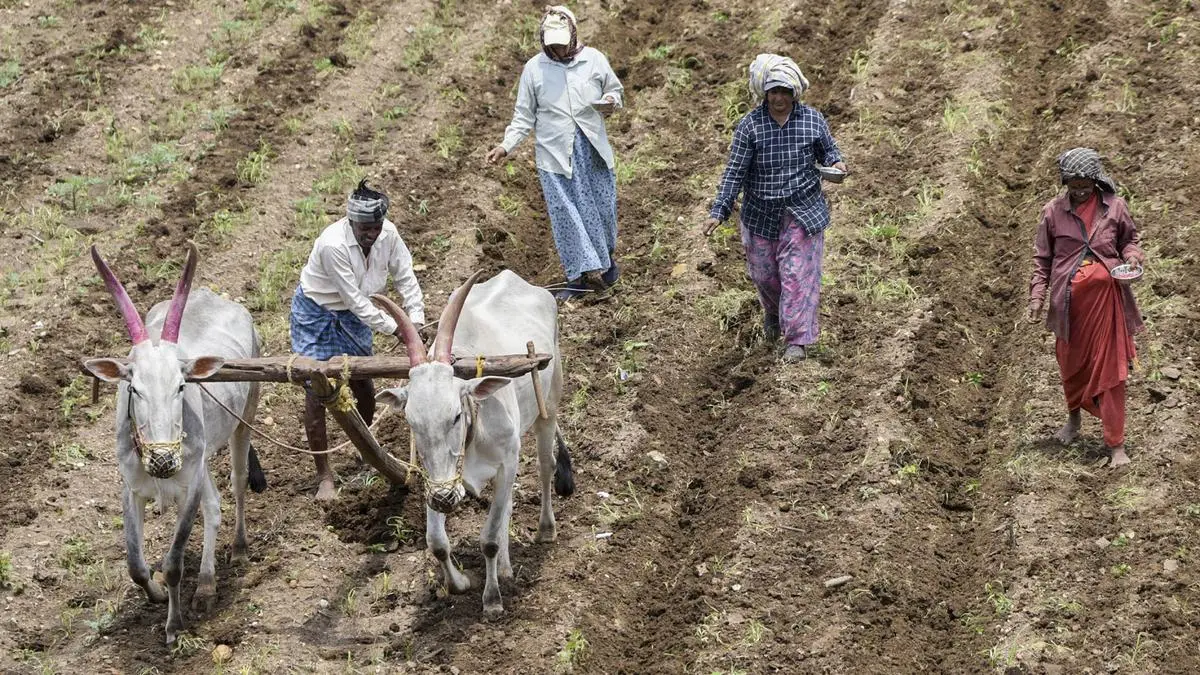By A Narayanamoo
Copyright thehindubusinessline

Every year, the growth rate of the economy measured in terms of Gross Domestic Product (GDP) captures the headlines. Governments and political leaders quickly take credit, presenting it as proof of sound economic management. This year, Tamil Nadu joined the chorus by proudly announcing a double-digit growth rate for 2024-25, prompting political celebration. For a lay reader, a 6 or 7 per cent growth rate sounds impressive and reassuring.
But for those who work with data and development realities, growth numbers do not always tell the full story. They are, at best, an indicator of economic progress and cannot, on their own, confirm that the income of all sections of the population is rising. Understanding what lies beneath the GDP growth figure is essential to have an honest debate on development.
Methodological issues
The first problem is the way growth rates are often calculated and publicised. Politicians and commentators frequently compare year-on-year growth — say, GDP in 2024-25 against GDP in 2023-24 — and make sweeping claims. But this approach is not always statistically sound. Economic performance can fluctuate due to temporary shocks or seasonal factors. If the base year happens to be a bad year with low value due to a pandemic, drought or global slowdown, the recovery that follows will automatically appear spectacular in percentage terms. On the other hand, if the base year value was exceptionally strong, the subsequent growth may appear weak even if the economy has expanded significantly in absolute terms.
There is also the question of methodology. Growth can be calculated in several ways, each of which produces a different number. For the same data series, the growth rate obtained using the log-linear method will differ from that calculated using the compound annual growth rate (CAGR), which represents a constant rate of growth over the period. The choice of method can change the number and therefore, the impression it creates.
Moreover, the growth rate measured in nominal terms will differ from that measured in constant terms, which adjust for inflation. India’s nominal GDP in 2024-25 is estimated to have grown by about 9.9 per cent, but the real growth rate after adjusting for inflation is around 6.5 per cent. Quoting the nominal figure without clarifying that it includes inflation can give a misleading picture.
Composition of growth
The composition of growth is another aspect that is often ignored in public discourse. India’s GDP has three broad components: the primary sector (agriculture and allied activities), the secondary sector (manufacturing, construction, industry) and the tertiary sector (services). Leaving out the agricultural sector from growth calculations will always yield a higher figure, because agriculture has been growing more slowly over time. In some years, the farm sector has even contracted.
For example, in 2024-25, manufacturing expanded by about 9.9 per cent, while agriculture grew by only around 1.4 per cent. In States where agriculture is a large part of the economy, poor performance in this sector pulls down the overall growth rate. In States with smaller contribution from the farm sector, the headline growth figure is less affected as experienced in Tamil Nadu.
Why does this matter? Because the sector from which growth comes determines how widely the benefits are shared. Studies from many countries have repeatedly confirmed that growth in agriculture has the highest “percolation effect,” meaning the extent to which gains spread to the poorest households, compared to manufacturing or services. A good agricultural year raises incomes for millions of small and marginal farmers, increases rural consumption and reduces hunger. Manufacturing also has a significant trickle-down effect, particularly when it is labour-intensive. The services sector, now the largest contributor to GDP, has a limited trickle-down effect because it does not promote the ancillary industries that create jobs for unskilled or less-qualified workers.
It follows that even when the headline GDP growth rate is impressive, if the expansion is driven mainly by the service sector or by capital-intensive industries, its impact on poverty reduction and income equality will be limited. In 2024-25, the services sector contributed 53.63 per cent to Tamil Nadu’s Gross State Value Added, while agriculture accounted for only about 13 per cent. Such a composition of growth raises the possibility that income disparities between the richest and the poorest have widened and that much of this growth may have been “jobless,” with limited gains for large sections of the population.
Political leverage
The political use of growth numbers adds another layer of distortion. High growth is presented as proof that the government’s policies are working; low growth is used by the opposition as evidence of mismanagement. Rarely do such debates acknowledge the influence of global commodity cycles, monsoon performance or international financial conditions, which can be as decisive as domestic policy in shaping growth outcomes. Nor is there much discussion about the fact that growth in itself does not guarantee improvements in nutrition, health, education or employment. A State/country can have 7 per cent GDP growth and still see rising child malnutrition, stagnant real wages for the poor and deepening regional disparities.
This is why it is important to “read” growth figures carefully, rather than taking them at face value. The number itself is only the starting point. One must ask: What is the base year and was it a normal year? Was growth measured in real or nominal terms? Which sectors contributed most to the increase? And perhaps most importantly: who gained from this growth?
To conclude, economic growth is a necessary condition for development, but it is far from sufficient. A state can only sustain high growth if it is inclusive; creates jobs, raises real incomes across the board and improves access to basic services. Without these, the headline numbers will remain a statistical celebration disconnected from the lived reality of millions. The ruling political class needs to understand the stories behind the growth rate before making a loud noise about it. If the debate on development is reduced to a contest over whose percentage point is higher, we will miss the deeper questions about the kind of growth India needs and the people it is meant to serve.
The writer is former full-time Member (Official), Commission for Agricultural Costs and Prices, New Delhi. Views expressed are personal
Published on September 23, 2025



